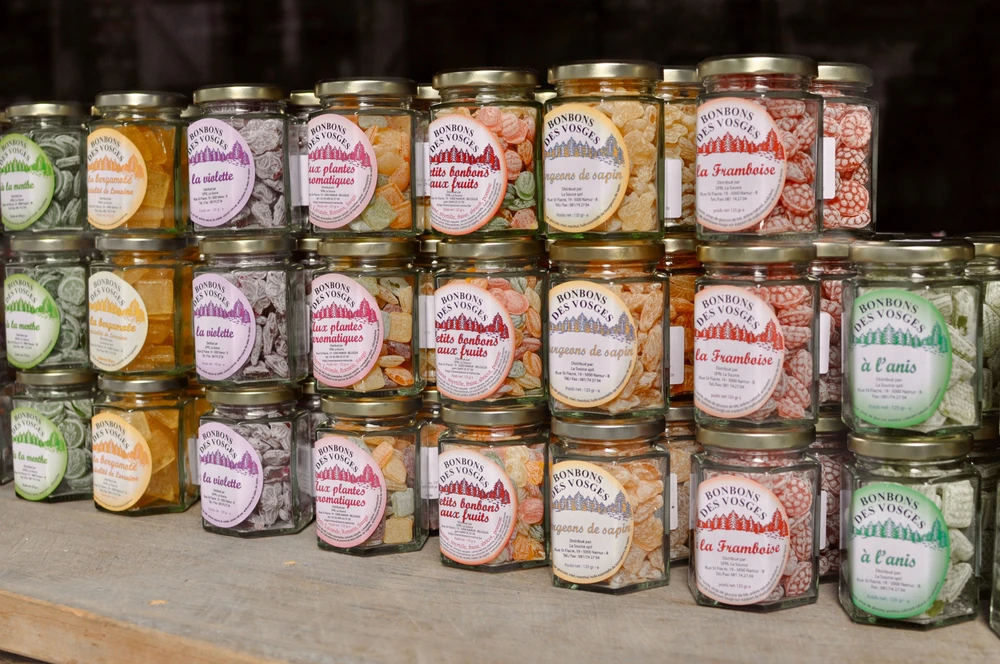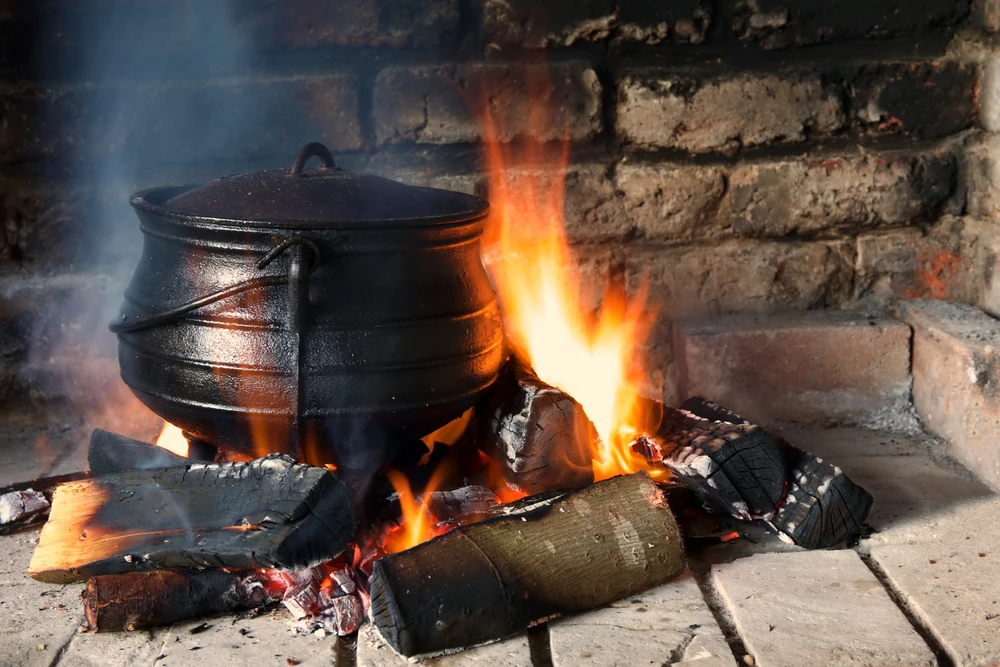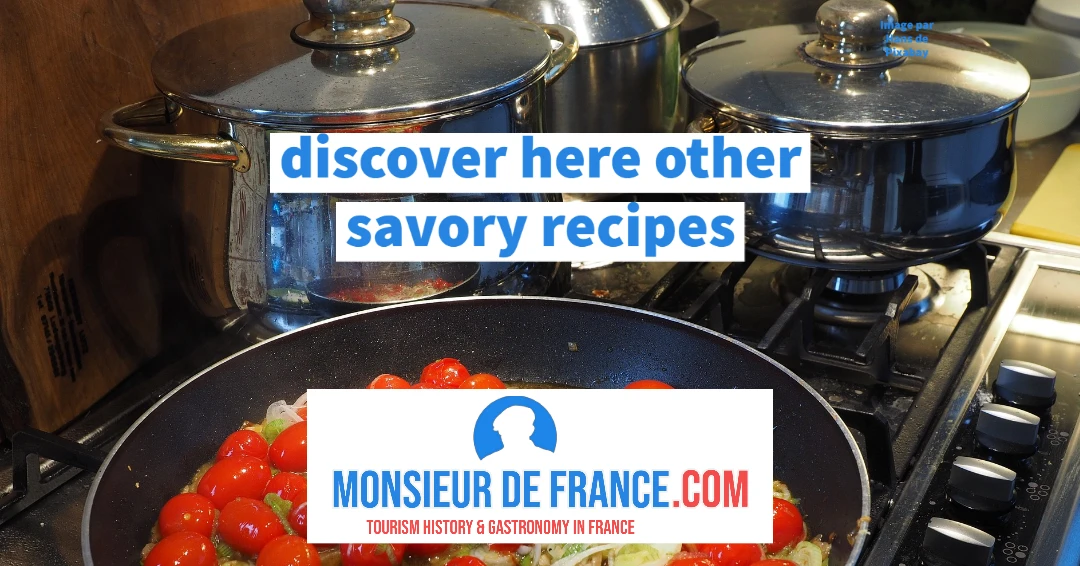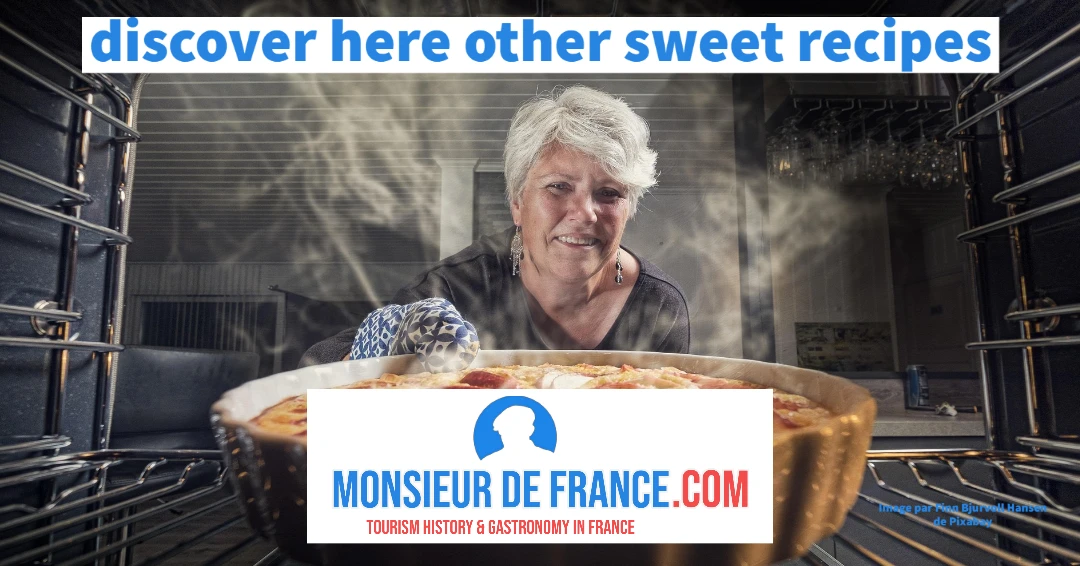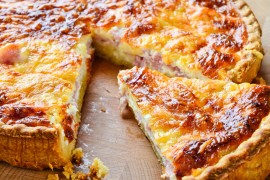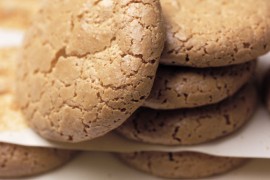5 Vosges specialties
1 The smoked bacon
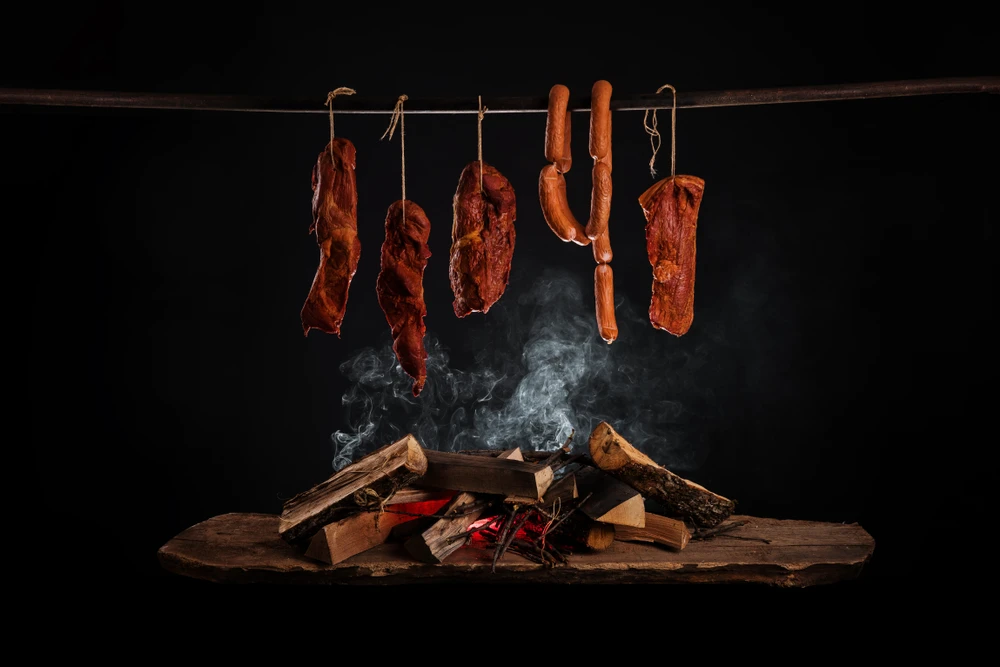
Pieces of pork put to smoke. Photo chosen by Monsieurdefrance.com: Prophoto42/shutterstock.fr
It is emblematic of the Vosges mountains. A local saying has a kid talking about it in a funny way: "do you like your father better or do you like your mother better?" the kid's answer: "I like the bacon better!" That's how much bacon is an old specialty here. This can be explained by the fact that, far from salt, and even, at one time, far from everything, up there in the mountains, the inhabitants chose to salt very little and especially to smoke the meats to preserve them, especially in winter. From the pig, the base in the Vosges, they made sausages and pieces that were hung in the high chimney for the smoke to dry and preserve them, or in a smokehouse located not far from the farm. This bacon, pork belly in fact, was decorated in many ways. It is still a culinary landmark in the department. With a small omelette it is just a joy.
2 The tofailles
Tofailles is an abbreviation of "à l'éttofaille", which means smothered . This is how potatoes are cooked in a little white wine and with bacon. A very long cooking that literally makes the potatoes turn into a kind of puree with chunks. It's good for the body and it's warming!
3 Munster cheese
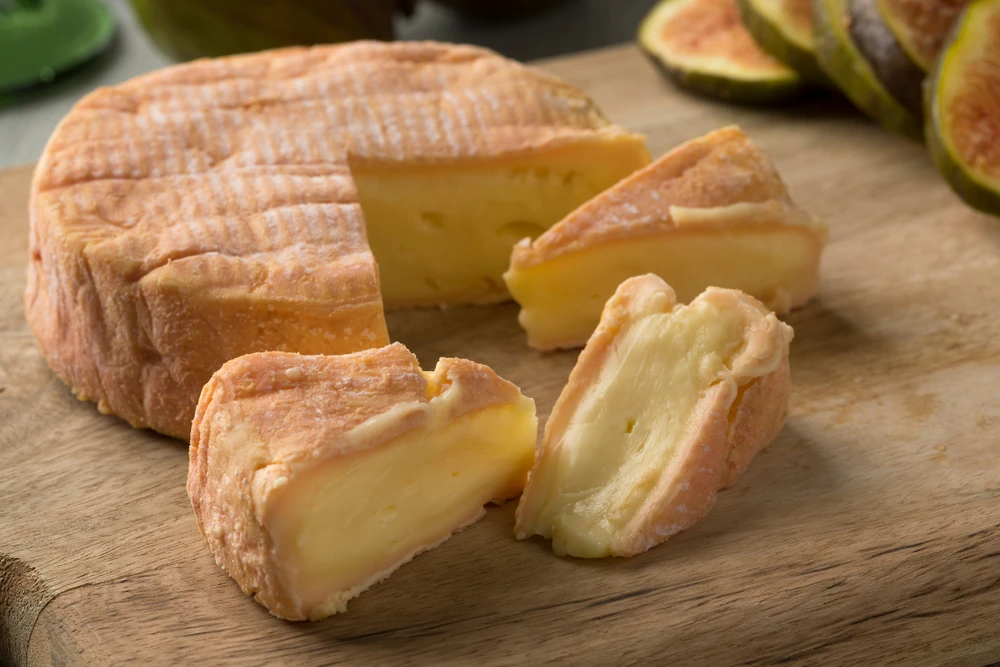
Munster cheese. Photo chosen by Monsieurdefrance.fr :Picture Partners/shutterstock.fr
The mountains of the Vosges produce milk, in particular thanks to the Vosges cow, a magnificent cow whose dark coat is separated on the back by a white band. It gives a fatty milk which makes it possible to manufacture the munster. In the department of Vosges they rather make the géromé variant of this cheese (it is said to be softer). It smells strong but what happiness on a little bread with a glass of white wine of Alsace (riesling or better: gewurztraminer). It can be made into a "vosgiflette" by putting it in place of the reblochon cheese of the tartiflette. It benefits from an Appellation d'Origine Contrôlée which protects it from malfunctions and allows it to be produced in Alsace, in the Vosges and in the Territoire de Belfort.
4 The brimbelles
First thing to know: no one from the Vosges will talk to you about blueberries. Here we say "brimbelles" and we harvest them on the "brimbeliers". These small black fruits with blue juice (be careful, it stains your teeth and your clothes!) lend themselves to many small dishes such as the famous raspberry pie that is eaten in the heart of summer, at the beginning of July, at the time of the harvest. They are also used to make ice cream. Nowadays, there are also "bluets", a larger variant (the size of a grape), which is cultivated (whereas the blueberry is wilder) and of which excellent pickles are made, for example.
5 Candy
The delicious candies of the Vosges have been made for years. They are made of glucose sugar that is flavored with fruit essence, cooked, and then broken up to put the pieces in bags. The best is the essence of fir buds, excellent for the throat. You can see the production at "la confiserie des Hautes-Vosges" in Plainfaing, not far from Saint Dié des Vosges.
Sweets from the Vosges. Never to be confused with the candies "la vosgienne" which are not Vosges. Photo chosen by Monsieurdefrance.Com : Florine Lambert/Shutterstock. com
But also !
The Vosges are also the land of the andouille du Val d'Ajol. It is made from offal but also from whole pork meat smoked with wood. It is made only by 5 authorized butcher's shops and is protected by a Controlled Designation of Origin. There are many smoked sausages in the Vosges, including the Lorraine spindle or "gendarme". It is also in the Vosges that we find the delicious Albert's cream, made of the remains of munster cheese cooked in white wine: the gewurztraminer. And then the Vosges is the department of ... Water ! It is, indeed, in the Vosges that are the sources of the mineral waters of Vittel, Contrex... Finally we are in Lorraine, so it is also the country of the famous mirabelle plum, this golden plum that we taste in pies at the end of the summer.
Our recipe of tofailles
The toffailles must cook for a long time. Photo chosen by Monsieurdefrance.fr : Currie-Killick/shutterstock.fr
For 6 people
The ingredients
- 20 thin slices of smoked bacon (smoked bacon).
- 1.5 kg of smoked pork neck
- 2,5 kg of potatoes (rather charlottes)
- 1 large onion
- 1 leek
- 25 Cl of white wine (Alsace wine, for example edelswicker).
- 50 Cl of fresh cream.
The process
- Peel your potatoes and cut them into slices (or large fries).
- Peel your large onion and chop it roughly.
- Slice your leek (the white and very little of the green)
- Cut your pork neck into pieces of about 1.5 to 2 cm thick.
- Take a casserole (but the best is a baeckhopf dish).
- Line it with 15 slices of smoked bacon (remove the rind).
- Add a good layer of potatoes: about 1/3 of your potatoes.
- Add the pork neck
- Add the chopped leek on top
- Cover with the potatoes: the remaining 2/3.
- Add the chopped onion
- Add the cream
- Finish by adding the white wine.
- Put the whole in the oven for 3 hours in the following order: 1 hour at 200°C (thermostat 6) then 2 hours at 180°C (thermostat 4).
Serve with a good green salad (you can find our vinaigrette recipe here) and Alsatian wine (rather red wine: pinot noir).
Our blueberry pie recipe
For 6 people:
Ingredients:
- 500 grams of blueberries (sorry, brimbelles!)
- 1 roll of shortcrust pastry.
- 90 grams of crushed cookies or almond powder (to absorb the blueberry juice).
- 80 grams of powdered sugar.
The process :
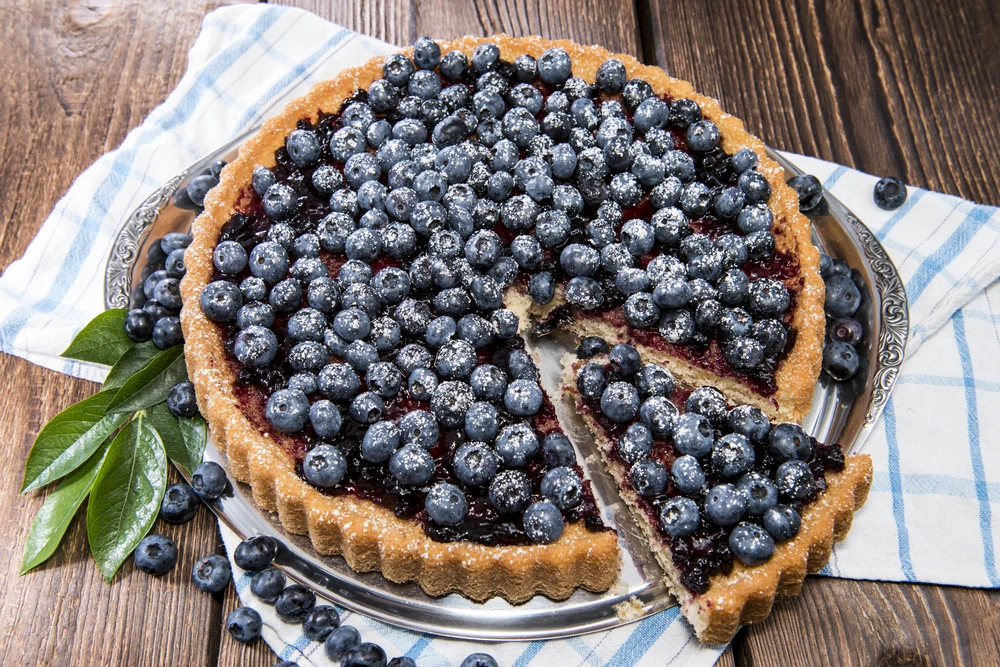
A delicious blueberry pie... Sorry, no! A delicious brimbelles pie... Photo chosen by Monsieurdefrance.fr : HandmadePictures/shutterstock.fr
- Preheat the oven to 180 °C (gas mark 5).
- Rinse your blueberries (sorry, brimbelles!) and put them on paper towels while you do the rest.
- Butter your pie tin
- Bake your pastry blank: put parchment paper on the bottom of the pie, cover it with small pebbles or dry white beans. Bake for 10 minutes at 180 °C.
- Keep the oven at 180 °C you will use it again soon
- Mix the white sugar and almond powder (or dry cake powder).
- Spread 3/4 of this sugar/almond powder mixture over the bottom of the tart.
- Arrange your 500 grams of blueberries
- Bake for 25 minutes at 180 °C
- 5 minutes before eating, sprinkle the remaining 1/4 of sugar/almond powder to make the tart a little crispy.
- In Lorraine we eat it "plain", but in Alsace, we add a "migaine", a mixture of egg, milk, cream and vanilla sugar.

